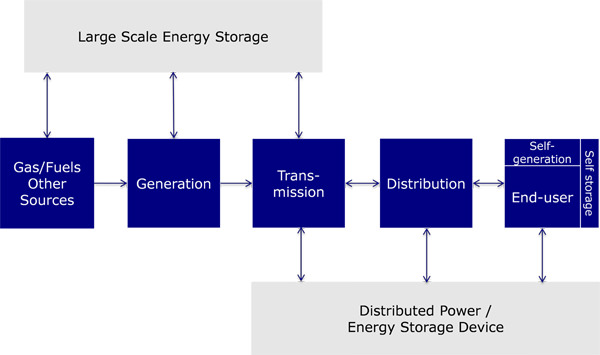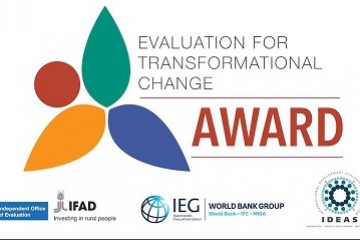Bottlenecks for energy storage in Europe – and how to address them
by Vincent Swinkels, Bart van der Ree and Sergio Ugarte
Energy storage is important for achieving Energy Union goals such as the expansion of renewable energy, decarbonisation, energy security, energy market integration and increased competitiveness. But its deployment is hindered by existing regulations that do not provide a level playing field, write Vincent Swinkels, Bart van der Ree and Sergio Ugarte of SQ Consult. They note that the European electricity system was not designed with energy storage in mind: the 2009 Electricity Directive does not even mention storage! This article, published earlier as SQ Consult Newsletter, is based on a report ‘Energy storage, which market designs and regulatory incentives are needed?’ written by SQ Consult in cooperation with Fraunhofer ISI and Universitat Politècnica de Catalunya, for the European Parliament, ITRE Committee, to support Committee discussions on the Energy Union.
Energy storage has been getting a lot of attention recently, as a result of two developments: one, the large increase of electricity from renewables, and two, the fast decrease of the cost of batteries due to the growth of markets for Electric Vehicles (EV) and mobile devices.
The large increase of electricity from renewable sources requires increased flexibility of the electricity system to accommodate for the intermittency of solar and wind energy. Energy storage at all levels in the electricity system (see figure 1) can help to provide this flexibility, next to demand-side management and more ‘traditional’ sources of flexibility such as flexible fossil-fuel fired power plants.
For many years pumped hydro storage installations have already provided centralised storage. A more recent development are smaller-scale storage options such as batteries and flywheels that support grid operation. And battery systems are already finding their way into households, businesses and smart grids, creating more resilience and independence for end-users and, in combination with solar cells, making it possible to optimise self-generation, storage and consumption of renewable electricity.

Figure 1. Storage at all levels in the electricity system
Both battery technology and the need for increased flexibility are developing rapidly. Energy storage has the potential to provide a share of this flexibility – at the same time contributing to Energy Union goals, as analysed in the report. Cost is still a barrier that storage needs to overcome. But its deployment is also hindered by existing regulations that do not provide a level playing field.
This article looks at the present and future value (and risk) of storage for the electricity system and analyses some regulatory bottlenecks in the way of further introducing energy storage.
Value of storage
Without storage, generation and consumption of electricity always have to be in balance. And because generation and consumption are physically separated, transport capacity is also a limiting factor. Because of these constraints the value of electricity on the wholesale markets can vary quickly and considerably over time, sometimes even becoming negative. Electricity spot market prices reflect these sudden changes in value.
The Electricity Directive does not mention storage at all. Interestingly enough, the Gas Directive (2009/73/EC) does include clear roles for gas storage
Now introduce energy storage in the electricity system. Energy storage provides a buffer between supply and demand. It can have different values in the electricity system:
- Bridge the value differences of electricity over time (hours/days/seasons). Such storage is especially valuable for large scale generation (wind farms, solar fields) and typically provided by large scale pumped hydro facilities, but can also be provided by other types of storage
- Stabilize the electricity grid, providing a value to grid operators. It can overcome transport capacity limitations, avoiding or postponing infrastructure investments, provide flexibility for grid balancing purposes. It can help to increase power quality, with storage installations reacting in less than seconds to variations in the system. For these purposes different storage technologies are used, such as different types of batteries and flywheels, each with their own specific characteristics.
- Storage ‘behind-the-meter’ has value to both the end-user and to the electricity system as a whole. It is valuable to the system as the use of storage decreases the variability of intermittent supply to the grid and it could be organised to function as a ‘virtual’ power plant, providing flexibility to the system.
For the end-user, use of solar cells and storage is expected to become cheaper than electricity from the grid, as transport fees and taxation are avoided. And storage behind-the-meter has the additional value that it provides back up in case of blackouts.
Risk of storage
Storage behind-the-meter may further increase one important risk for the electricity system. Demand for electricity from the grid will reduce over time (because of energy conservation and behind-the-meter production – load defection), but overall costs of operating the grid will remain at the same level or might even increase.
It is not clear how transport tariffs apply to the use of storage; different rules apply in different countries
With local storage, end-users with local electricity production can make themselves even less dependent from the grid. This could result in stranded assets and much higher costs for the remaining volumes that make use of the grid, in turn speeding up the process of load defection.
Regulatory Bottlenecks
The regulatory framework for the European electricity system was not designed with energy storage in mind. This becomes clear when looking at the Electricity Directive (2009/72/EC), which defines the basic principles for the internal market for electricity. The Electricity Directive does not mention storage at all. Interestingly enough, the Gas Directive (2009/73/EC) does include clear roles for gas storage.
Not mentioning storage of electricity in the Electricity Directive has several consequences:
- The Directive includes the unbundling rules that separates supply and production from network operation. The network operators are ‘regulated entities’ under these rules. Storage can be of value to these entities to balance the grid and avoid investment in transport capacity. Regulated entities have specific tasks and obligations. Because storage is not mentioned, it is uncertain whether it is part of their role and whether costs of storage are covered by the regulated fee structure. The result is that network operators hesitate to invest in storage or contract storage capacity.
- It is not clear how transport tariffs apply to the use of storage; different rules apply in different countries. In some countries transport fees for the use of pumped hydro storage facilities are paid twice, as if the storage facility is both, an electricity consumer and producer and not an intermediate service.
- A similar situation exists for the (future) use of EV batteries in smart grids. Electricity will go back and forth between the storage unit and the smart grid. It is unclear what this implies for transport fees and taxation.
Large-scale renewables generators do not need to take any responsibility to contribute to a more balanced supply of electricity to the grid
Some other regulatory bottlenecks for further development of storage are:
- The Renewables Energy Directive (2009/28/EC) defines guaranteed or priority access for electricity from renewable sources. This implies that large-scale renewables generators (solar fields, wind parks) do not need to take any responsibility to contribute to a more balanced supply of electricity to the grid.
- Incentives for renewable energy production differ widely across Europe. Many of these schemes are variations on feed-in tariffs or net metering. In general, these schemes do not stimulate storage and place all responsibility for net stability on other parties than the operators of the renewable energy sources.
- In many countries, households and small businesses pay (or receive) a flat fee for electricity or use is made of other simple fee structures that don’t take actual load profiles into account. This disregards the differences in the value of electricity over time and the value that storage has in bridging the differences in electricity value over time is lost.
Recommendations
To address these bottlenecks we have developed the following recommendations:
1. Storage incentives for renewables producers
Producers of electricity from renewable sources (wind parks, solar fields) have no responsibilities to reduce intermittency of supply. Such responsibility could be provided through the design of subsidy schemes, grid fees or access conditions, providing a premium on gradual supply, without removing guaranteed, or priority, access rules.
2. Ownership and control of storage by grid operators
Storage has a value for network operators to balance the grid and avoid infrastructure investments. The rules for ownership and control of storage are unclear for these regulated entities under the Electricity Directive, making them hesitant to invest in storage. This situation should be clarified, making it possible for regulated entities to own, control, and/or contract energy storage for grid balancing purposes.
Discussions on capacity market mechanisms for electricity production should be broadened to include flexibility options provided by other technologies such as storage and demand-side management
3. Flexibility markets
Storage is one of the options that can provide flexibility to the electricity system, next to demand-side management, interconnection and ‘traditional’ gas-fuelled power units. Current discussions on capacity market mechanisms for electricity production should be broadened to include flexibility options provided by other technologies such as storage and demand-side management.
4. Storage and end-users
Storage, in combination with cheap solar, will enable end-users to optimise self-production, storage and consumption. This development has the potential to disrupt the end-user market, leading to reduced volumes of electricity sourced from the grid, with large implications for both network operators and ‘traditional’ production companies. Network fee structures will need to be adapted to these changing circumstances, without providing additional incentives for end-users to go off-grid altogether.




